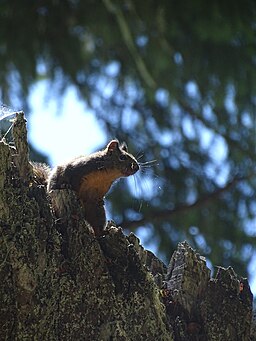
This morning a brother in my Twitter sangha posted the following five paragraphs from the Pali canon (Dutiyaassutavāsutta, SN 12.62).
OK, four, plus intro. That, with allowance made for the verbose, refrain-heavy nature of Buddhist scripture, really comes to about half as much.
Nevertheless, I've dropped a TLDR at the end for the hard-of-waiting.
(Note: "disillusioned" is a positive thing in Buddhist texts. It means "freed from delusion". When you think about it, it's weird that we use that word as a complaint in English.)
So I have heard. At one time the Buddha was staying near Sāvatthī in Jeta’s Grove, Anāthapiṇḍika’s monastery. …
“Mendicants, when it comes to this body made up of the four primary elements, an unlearned ordinary person might become disillusioned, dispassionate, and freed. Why is that? This body made up of the four primary elements is seen to accumulate and disperse, to be taken up and laid to rest. That’s why, when it comes to this body, an unlearned ordinary person might become disillusioned, dispassionate, and freed.
But when it comes to that which is called ‘mind’ and also ‘sentience’ and also ‘consciousness’, an unlearned ordinary person is unable to become disillusioned, dispassionate, or freed. Why is that? Because for a long time they’ve been attached to it, thought of it as their own, and mistaken it: ‘This is mine, I am this, this is my self.’ That’s why, when it comes to this mind, an unlearned ordinary person is unable to become disillusioned, dispassionate, and freed.
But an unlearned ordinary person would be better off taking this body made up of the four primary elements to be their self, rather than the mind. Why is that? This body made up of the four primary elements is seen to last for a year, or for two, three, four, five, ten, twenty, thirty, forty, fifty, or a hundred years, or even longer.
But that which is called ‘mind’ and also ‘sentience’ and also ‘consciousness’ arises as one thing and ceases as another all day and all night. It’s like a monkey moving through the forest. It grabs hold of one branch, lets it go, and grabs another; then it lets that go and grabs yet another. In the same way, that which is called ‘mind’ and also ‘sentience’ and also ‘consciousness’ arises as one thing and ceases as another all day and all night.
TLDR: It's not hard to accept that our bodies are temporary. What we really don't like is that our personhood is just as biodegradable. It changes constantly – we cease to exist and then reappear in different form from moment to moment – until one day no trace, physical or metaphysical, remains of us.
Reading this, I became disillusioned, dispassionate, and freed.
Deep bow to my brother.
(Photo of a fragment from an 18th century Thai anthology of Pali canon teachings courtesy of the Chester Beatty Library [Dublin] and Wikimedia Commons.)

We choose our religious convictions. This fact may be a bit occult; we tend to imagine we've been convicted or converted to our faith in some way, by some revelation that came from outside of us.
But we weren't. Whether we settled for the path of our forebears, or struck out on a new one in response to lived experience, we elected to follow those teachings.
For reasons.
So the most revealing question you can ask a religious person is, "Why did you choose that religion?" The answer, if you can get a candid one, tells you important things about that person.
And if it's the least bit reflective, it also teaches them important things about themselves.
I find "Why did I decide to practice Zen?" a great housekeeping koan. Regular delving into it is an effective hedge against the egocentrism that eremitical practice engenders.
(Photo courtesy of Sérgio Valle Duarte and Wikimedia Commons.)
 (Unidentified; growing on a maple log surrounded by water one to two feet deep.)
(Unidentified; growing on a maple log surrounded by water one to two feet deep.)
Appearing also on My Corner of the World.
The wildlife of the North Pacific rainforest is famously reserved; where the East has its flashy cardinals, red efts, and indigo buntings, our own rubber boas, rough-skinned newts, and varied thrushes are modestly beautiful. The odd Steller's jay or goldfinch may be a pleasant change of pace, but we're satisfied to return to the brown and russet uniform of our understated nation when they've passed.
While sitting my 100 Days on the Mountain, I sometimes daydreamed about founding a North Coast-native order of forest monks. And should that fancy ever gel, we will sit in the forest of my forebears, wearing the habit of our Douglas squirrel hosts: a hooded robe of honest Cascade umber, over an ochre jersey.
(Text edited from the notes for my book, 100 Days on the Mountain. Photo of Tamiasciurus douglasii courtesy of Ivie Metzen, the US National Park Service, and Wikimedia Commons.)
(Pieris japonica, known here as popcorn bush, is a popular landscaping shrub on the North Pacific Coast. Native to the same latitudes on the far side of the ocean, where climate and soil types are about identical, I'm told it fills whole ravines in Japanese forests. This must be brilliant to see, given its heady fragrance and dense sprays of sparkler-bright blossoms.
The early-spring show, and the fact that we had one at every house I can remember – always right by the front door – made this a favourite flower from early childhood. It's also a good carving and turning wood, fairly soft and light but fine-grained, taking an oil finish well; properties apparently unknown outside of Asia, given the absence of mention online, at least in any of my languages.)
Appearing also on My Corner of the World.
 "What makes you different makes you valuable."
"What makes you different makes you valuable."
Terry O'Reilly
(Painting of Japanese long-tailed rooster courtesy of Shibata Zeshin and Rawpixel.com.)






